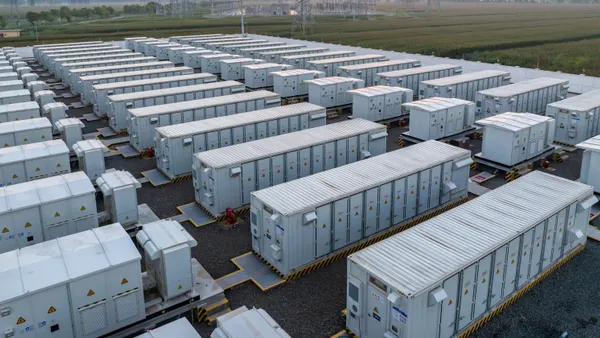Dive Brief:
- Comments are in on the EPA's proposed federal implementation plan (FIP) to reduce carbon emissions from the power sector, with more than 200 parties filing documents praising or critiquing the proposal, according to separate reports from ClimateWire and Platts.
- Comments from the utility sector push the EPA to make flexible emissions trading available to states and argue that the FIP should be compatible with both rate- and mass-based compliance approaches to the Clean Power Plan.
- Environmentalists, by contrast, pushed for carbon trading rules that would cut emissions the fastest. Meanwhile, grid operators advocated for the inclusion of a reliability safety valve to allow power plants to operate beyond emission limits in the event of an emergency.
Dive Insight:
For states considering whether or not they will comply with the Clean Power Plan, the federal implementation plan could be of utmost importance. States that do not submit state compliance plans by Sep. 6, 2016 would receive a FIP, which would outline their path toward compliance with emissions targets. The FIP is also expected to serve as a guide for states as they craft compliance plans fo their own.
The risk of having the EPA in direct control of compliance has forced many states opposed to the federal carbon regulations into a difficult position. While 27 states are challenging the plan in court, most are mulling compliance strategies on the state level at the same time. Many are engaging with the EPA on the FIP as well, even as they seek to overturn the Clean Power Plan.
EPA envisions the FIP adopting either a mass-based or rate-based approach to compliance, but utilities and grid operators pushed the agency to design it to work with both.
"To facilitate the broadest possible market, EPA ... should not foreclose the opportunity to develop methods to allow trading between rate-based and mass-based plans while still achieving compliance objectives," John Bear, Midcontinent Independent System Operator CEO, wrote in his comment on the rule, according to Platts.
Grid operators also pushed utilities to include a "reliability safety valve" in the FIP that would allow plants to operate above emissions limits in the event of grid emergencies.
One emerging point of contention in compliance appears to be on carbon trading. While utilities, states and environmentalists broadly support the idea that states should be able to trade emissions to help reduce compliance costs, the design for the regime remains undetermined. A number of states, even those critical of the regulation, are engaged in discussions around carbon trading and the CPP, and the federal implementation plan could provide a model for the conversations to follow.
Comments from the Edison Electric Institute, ClimateWire reports, pushed the EPA to "not constrain state flexibility" in designing a carbon trading scheme under the FIP. This sentiment was echoed in filings from coal-heavy states wary of a federal plan that pushes them toward carbon market rules that cut emissions quickly.
Those calls for state flexibility were met with arguments from environmental organizations that the EPA should exercise more authority in forming tough carbon market rules. In particular, ClimateWire reports, environmental organizations pushed the agency to not give away "virtually all the value" of emissions credits to existing generators for free.
Last week, a federal appeals court in Washington, D.C. denied a request to delay implementation of the Clean Power Plan while it is being challenged in court. The court set June 2 as the date for oral arguments. The case is widely expected to be taken up by the Supreme Court, regardless of the lower court decision.
Correction: An earlier version of this post attributed ClimateWire's reporting to its sister publication, EnergyWire.













